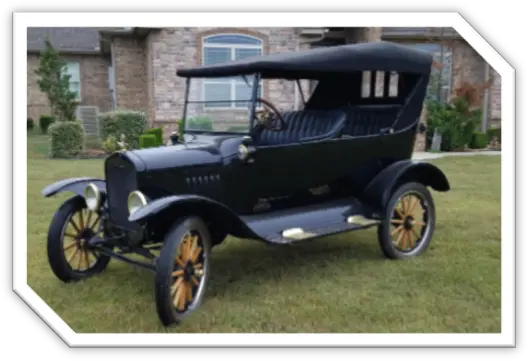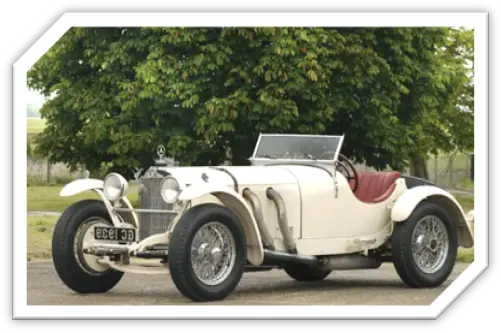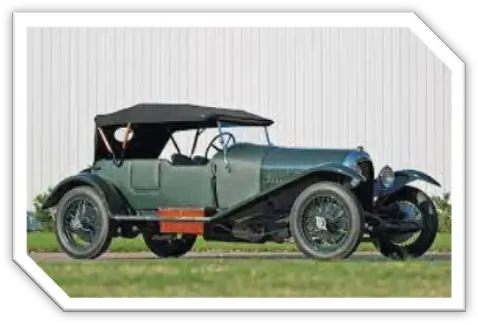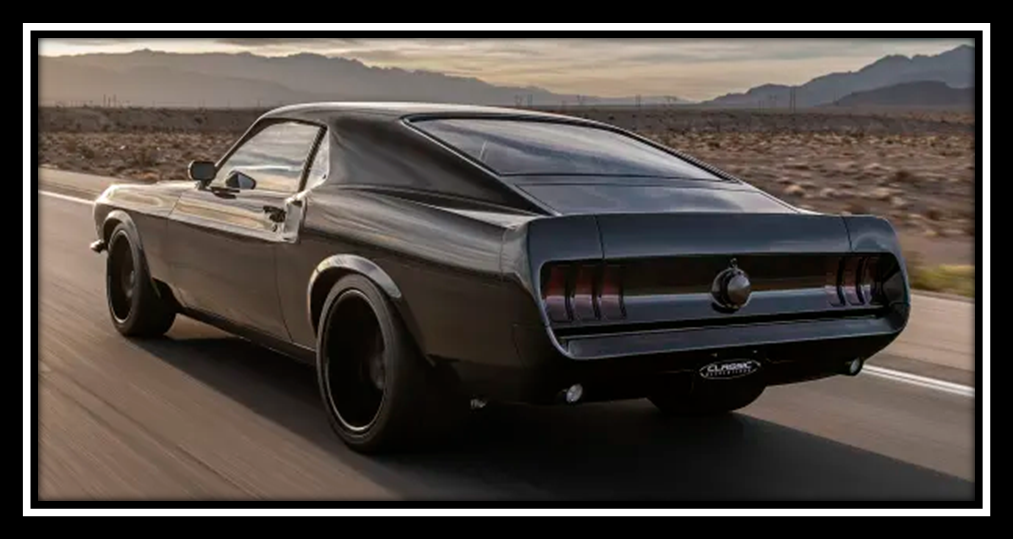Passionate about 1920s cars? Do vintage or racing cars make your heart flutter? If so, then this article is the right one to pitch in.
We know how much you are enthusiastic about them. This is something only car lovers can relate to the most. Well, you will see so many luxurious cars at present, each car is better off than another.
But have you ever thought about how cars had been during the 1920s? Cars in that era were so much different than you have right now.
Believe it or not, you will be equally surprised knowing about the 1920s cars, as any new tesla does. Without exaggerating the intro any longer, let’s know about these wonderful and innovative creations:
Cars in the 1920s
In the 1920s, automobiles gained popularity. Any household could own one; these weren’t limited to the wealthy and well-known. It is hardly an overstatement to say that owning a vehicle revolutionized people’s lives in the 1920s as the car makers discovered methods to improve accessibility, security, and comfort.
Families gained a level of independence they had never known before, all because of individuals like Henry Ford, who bulk-produced the Model T, one of the most well-liked automobiles of the 1920s.
Automobiles used 90% of the country’s gasoline, 80% of its rubber, and 75% of its glass as industry boomed. New and inventive production methods were created. America and Britain had economic booms.
However, 1920s automobiles were more than simply inexpensive, useful runabouts. The 1920s luxury vehicles, which were and still are some of the most stunning autos ever produced, were another outstanding performance.
We learned that vehicles could be daring, extravagant, and dazzling thanks to The Great Gatsby. The way powerful industrialists and Hollywood moguls made their entrances was in a Bugatti, Rolls-Royce, Duesenberg, or Auburn.
A handful of these 20s automotive superstars went down in history as the 1920s vehicles that shocked the world, much as the most well-known iconic vehicles that appeared later.
You may also like: 1950s cars – The Ultimate Guide – History, Facts, Pictures & More
Some of the best cars of the 1920s to explore!
You just read about what these cars were like during the 1920s. Aren’t you now interested to know about these cars in detail? How amazing would these cars be? What kind of new features and functionalities do they offer?
Hold your thoughts because now you will read about all these in the following section:
Ford Model T

Discussing one of the era’s most well-known cars would not be complete without addressing it. The Model T was the vehicle that set the world on tires when it was introduced in 1908 to an unprepared world.
Henry Ford intended the Model T, often known as “Tin Lizzie,” to be reasonably priced, dependable, and easy to use. It was the world’s first bulk-produced automobile. The first manufacturer in the world to construct vehicles on a moving production line was Ford’s 60-acre facility in Highland Park, Michigan.
The cost and build time both significantly decreased within six months. The Model T’s price in 1909 was $825, almost 18 months of the typical American’s wage. It cost $360 in 1927.
In the 1920s, the Ford Model T swiftly rose to the top of the list of most popular vehicles, and by the decade’s beginning, more than half of all automobiles registered worldwide were Ford. Between 9,000 and 10,000 vehicles per day were rolling off the assembly line by 1925.
Can you guess how many were produced and sold by that time? It was over 15 million by the time production ended in 1927. Many 1920s automobiles were prettier, quicker, and more desired, but the Model T came to represent the idea of “democratizing the vehicle” that Henry Ford had.
Fast & Loud follows automotive gurus Richard Rawlings and Aaron Kaufman as they travel the country in search of vintage and abandon vehicles that they can restore to their former glory in their Dallas shop.
Duesenberg Model J

The Duesenberg Model J was one of the most extravagant luxury automobiles produced in the 1920s. The business, known locally as “Duesy,” was established in 1913 in Saint Paul, Minnesota, by the German-American brothers August and Frederick Duesenberg.
In marked contradiction to Henry Ford’s “vehicle for all,” they produced racing and expensive cars. A small group of people could afford the Model J.
Automobile businessman EL Cord purchased Duesenberg in 1926 for the brothers’ technological prowess and growing brand reputation. Duesenberg was among the most well-known automobile manufacturers in the 1920s.
To compete with the European giants Rolls-Royce and Hispano-Suiza, he set out to create the world’s top-performing automobile. The Model J quickly rose to the top of the 1920s’ most wanted luxury automobiles.
Only the extremely rich could afford it. The cost of the automobile as-is, with the running gear and chassis, was over $9,000; with a bespoke body, the price could easily reach $13,000, or almost £175,000 in today’s money, in 911 Turbo terms. Compared to this, the Ford Model T, one of the most well-liked automobiles in the 1920s, was considerably less expensive.

Greta Garbo, Clark Gable, and even Al Capone drove Duesenberg Model Js, the pinnacle of opulent automobiles in the 1920s. The American stock market fell in 1929, ushering in the Great Depression.
Not the best moment to try to sell an expensive car. Thankfully, the automobile was kept in manufacturing until 1937 by the A-listers of Hollywood and old-money aristocrats.
It wasn’t easy to find a quicker, more elegantly constructed, or more magnificent car elsewhere in the world, one of the most thrilling and opulent automobiles of the 1920s.
Bentley 3-Litre

Walter Owen Bentley’s post-World War I aim of building a “quick automobile, a fine car, the greatest in its class” was embodied in the 3-Litre, Bentley’s first chassis. The 3-Litre, one of the greatest historical automobiles of the 1920s, took first place in the 24 Hours of Le Mans in both 1924 and 1927.
In Cricklewood, north London, “WO,” as he was popularly called, started his business selling French DFP vehicles alongside his brother Horace under the name Bentley & Bentley. He established Bentley Motors Limited after being released from the Royal Naval Air Service, which went on to become one of the most well-known automakers of the 1920s.
The crew that created the 3-liter straight-four engine, which made its debut off Baker Street in London, included former World War I aviator Clive Gallop. The Bentley 3-Litre soon became one of the most well-liked automobiles of the Twenties when the first manufacturing model was handed to owner Noel van Raalte in September 1921.
As was customary with high-end automobiles in the 1920s, clients would take the structure, engine, balance, and transmission (for a total cost of £1,100) to specialized coachbuilders.
Production was initially only moderately fast, but soon the order books began to fill up. Ettore Bugatti, a famed vehicle manufacturer, referred to it as “the quickest truck in the world” because of its weight, size, and speed. Nevertheless, it was one of the greatest antique automobiles of that era.

The outstanding Bentley 412 liter, which was also one of the best cars of the 1920s, replaced the 3-Litre in 1929 after it had been in production for three years. Finding, acquiring, restoring, and selling some of the best and most distinctive automobiles ever produced is what Ferrari specialist and master restorer Wayne Carini does in his book, Chasing Classic Cars.
Hispano-Suiza H6

While Bugatti, Rolls-Royce, Mercedes-Benz, and Alfa Romeo immediately spring to mind when discussing vintage luxury automobiles from the 1920s, what about Hispano-Suiza?
Unlikely. However, this little-known Spanish automaker became one of the most well-known in the 1920s and created possibly the most avant-garde and expertly constructed automobile of the time.
Only a tiny percentage of car fans will be familiar with the company’s creator, Marc Birkigt, a Swiss native. He was a great inventor who created a vehicle of such magnitude that it briefly replaced Rolls-Royce as the luxury automobile brand of choice for the wealthy during the Charleston era. The H6 was undoubtedly one of the outstanding automobiles of the 1920s.
The H6 was the first vehicle in the world to have servo-assisted drum brakes made of light metal on all four wheels. It was shown at the 1919 Paris Motor Show and had a 6.6-liter aluminum plain (upgraded to an enormous 8.0-liter in 1922).
Rolls-Royce acquired the design and continued using it up to the 1965 Silver Cloud since the technique was so cutting-edge for automobiles in the 1920s.
The chassis was purchased, and some of the best European coachbuilders of the time, including Chapron, Binder, Letourneur et Marchand, and Hibberd & Darrin, then bodied the vehicle, much like all other luxury automobiles of the 1920s. Production of the H6 and its derivative variants ended in 1933, after about 2,350 units had been made.
Mercedes-Benz SSK
In only four short years, Mercedes-Benz, already ranked among the top automakers in the 1920s, produced a two-door roadster that completely revolutionized the industry. The Mercedes-Benz SSK, short for Super Sport Short in German, was among the finest sports cars of its time and is one of the top vehicles from the 1920s.
Ferdinand Porsche, possibly the most well-known name in automotive history, created the short-wheelbase SSK, produced between 1928 and 1932. It was a variant of the 1927 Modell S. Before leaving to create his own business; he developed one more vehicle for Mercedes-Benz.
At the time, the boosted 7.1-liter straight-six, which had a peak speed of about 120 mph, was the fastest automobile in the world, besides being one of the greatest automobiles ever made.
It also served as the undisputed champion of its day, taking home victories at the 1929 500 Miles of Argentina, the 1931 German Grand Prix, the 1930 Irish Grand Prix, the 1929 and 1930 Cordoba Grands Prix, and the illustrious 1931 Mille Miglia.
Fewer than 40 were constructed despite being in production for four years; other sources have numbers as low as 31, and around half of those were marketed as “Rennwagen,” or racing vehicles.
The handful that wasn’t ruined or burnt out had been destroyed for spare parts because the majority were utterly wrecked during racing. Only four to five of these magnificent vintage automobiles from the 1920s are said to still be in their original condition.

George Milligan, a native of Norfolk who had moved to Brighton to purchase an SSK for the magnificent amount of £400 during the height of World War II, made the trip in 1941. Because the vendor wasn’t there, the buyer trusted Milligan to push the money through the letterbox.
One version of the story claims he kept one of the most stunning 1920s vehicles hidden in a lock-up for 60 years, while another claims he drove it passionately for the same period of time. Whatever the case, he sold the automobile in 2004 for $7.4 million after investing £400 in it in 1941.
To Wrap Up
The 1920s automobiles were no exception to the Roaring Twenties’ epoch of extravagance and irresponsibility, cultural dynamism, and stunning design.
After all, they were designed to revolutionize the world and represent the decade’s raw might, which they indeed did. The result is right in front of us.
These 1920s cars still continue to be some of the most stunning and incredible vehicles ever created, despite so many inventions each year.



